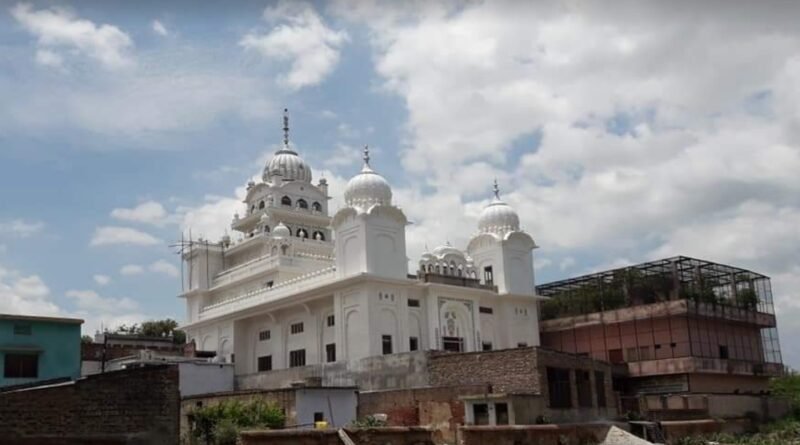Gurudwara Guru Gobind Singh, Ayodhya
Gurudwara Guru Gobind Singh Ji – Ayodhya on the right bank of the River Saryu, also known as Ghaghra, is a noted pilgrimage centre for the Hindus because it has the honour of being the native place and capital of Lord Rama. It is a railway station on the Lucknow-Faizabad-Mughal Serai section of the Northern Railway and is also connected by road to the district town Faizabad, only six kilometres away. Guru Nanak Dev, Guru Tegh Bahadur and Guru Gobind Singh (as a child) visited Ayodhya at different times. There are three Sikh shrines here, all in a cluster, near Brahm Kund on the bank of Saryu. The one dedicated to Guru Nanak Dev is only a Nishan Sahib fixed on a platform constructed in 1972. Memorial to Guru Tegh Bahadur’s visit, too, was only at platform until 1975, when Sikh troops of Faizabad Cantonment built a room over it. Guru Granth Sahib is seated here only during a series of akhand paths concluding on the martyrdom anniversary of Guru Tegh Bahadur. The shrine dedicated to Guru Gobind Singh was also only a Thara Sahib to begin with, and all the three shrines were looked after by Brahman priests until the arrival here of a Kashmiri Sikh, Gulab Singh about the middle of the nineteenth century. He occupied the shrines and later constructed Gurdwara Guru Gobind Singh Ji in 1899 on the site of the platform dedicated to child Gobind Das. An octagonal domed room is named Singhasan Sthan (lit. throne) Guru Gobind Singh Ji. It encloses the former platform on which are placed the sacred relics – i.e. a pair of sandals believed to be once worn by Guru Tegh Bahadur, a steel arrow, a dagger and a chakar (steel quoit with sharp outer edge). There is also a hand-written copy of the Holy Scripture dated 1838 Bikrami (A.D. 1781) . There are few Sikhs in Ayodhya, but Sikh soldiers from Faizabad visit usually on Sundays and other gurpurbs.















